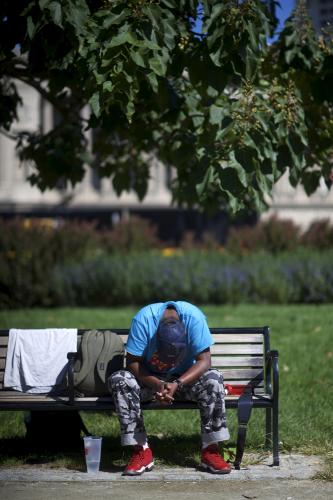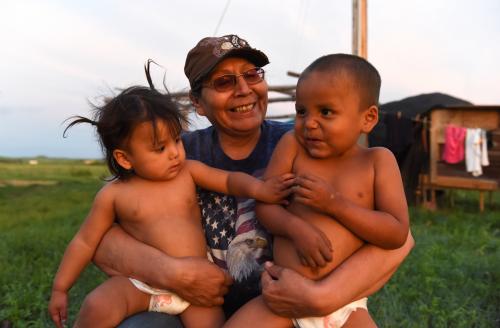This op-ed was originally published in The Hill on March 8, 2019.
In the half century since Lyndon Johnson declared war on poverty, the United States has spent trillions of dollars in an effort to reduce poverty, especially for the young and the elderly. The federal government today spends about $500 billion a year on programs that guarantee cash, food, and medical benefits to the families of poor children as well as for other programs that provide housing benefits, education, training and, in some cases, encourage work and marriage. Yet in 2015, more than 9.6 million American children lived in households with incomes below the threshold that is defined by the widely recognized supplemental poverty measure.
Poor children have weaker language and memory than their peers, and these problems continue into adulthood. When they grow up, they have lower earnings and income, are more dependent on public assistance, have more health problems, and are more likely to commit crimes. Robust evidence has shown that low income itself, rather than other conditions poor children face, is responsible for many of these negative impacts of poverty on child development. This is a tragedy for poor children and their families, but it also compromises our goal of equality of opportunity for all its citizens and threatens the vitality and future prosperity of our nation.
Congress voted on a bipartisan basis to request a consensus study by the National Academies of Sciences, Engineering, and Medicine in 2015 so that a committee of experts could formulate a plan for reducing child poverty in the United States by half within 10 years. The committee, on which we both served, has recently released its findings. We attached great importance to ensuring its recommendations were supported by strong research and evaluation. We focused not only on the degree to which a given course of action would reduce poverty among children, but also on likely impacts on high risk subgroups such as minorities, budget costs, and impacts on work, marriage, opportunity, and social inclusion.
Nations must be judged by the way they treat their children.
In examining the effectiveness of current government programs, we found that a number of them, in particular the supplemental nutrition assistance program and refundable tax credits, have been effective in reducing child poverty and improving child health and achievement. We also examined the experiences of peer countries and found that the United Kingdom was able to reduce its child poverty by 50 percent, and that Canada is poised to do so as well. We then formulated a set of 20 proposals for expanding existing programs or starting new ones. We also combined some of those into four program packages. We concluded that none of the 20 policy and program expansions we developed would be able, on its own, to meet the goal of reducing child poverty in the United States by half within 10 years.
One of the packages also would increase the minimum wage to $10.25. Additionally, both packages expand benefit programs, one by increasing housing vouchers and food stamps and the other by replacing the current child tax credit with a universal child allowance and by creating a child support assurance program that would guarantee the payment of legally established child support, even if the noncustodial parent does not make the payment. This second package explained here would also eliminate some restrictions on access to benefit programs for legal immigrants.
At $90 billion to $110 billion a year, the costs of these two packages would be substantial, although much less than the aggregate costs that child poverty impose on the nation, which have been estimated to amount to $800 billion to $1.1 trillion each year. At a lower cost of about $44 billion each year, a promising smaller package comprised of the earned income tax credit and child care tax credit expansions plus a $2,000 each year child allowance would reduce child poverty by a third, rather than a half, while at the same time increasing employment among low income adults by 570,000 as well as increasing their earnings by $10 billion each year.
Nations must be judged by the way they treat their children. If our country is actually serious about reducing child poverty and promoting economic opportunity and upward mobility for all children, it is going to have to implement better solutions. Other countries have demonstrated that where there is a will, there is a way to accomplish this goal. Without strong action by policymakers, poverty and its inevitable consequences will continue to impose great costs on children, families, and the nation.
Ron Haskins is the Cabot Family chair and a senior fellow in economics at the Brookings Institution. Timothy Smeeding is the Lee Rainwater professor of public affairs and economics at the University of Wisconsin in Madison.
The Brookings Institution is committed to quality, independence, and impact.
We are supported by a diverse array of funders. In line with our values and policies, each Brookings publication represents the sole views of its author(s).








Commentary
Op-edHow to cut child poverty in half
April 1, 2019